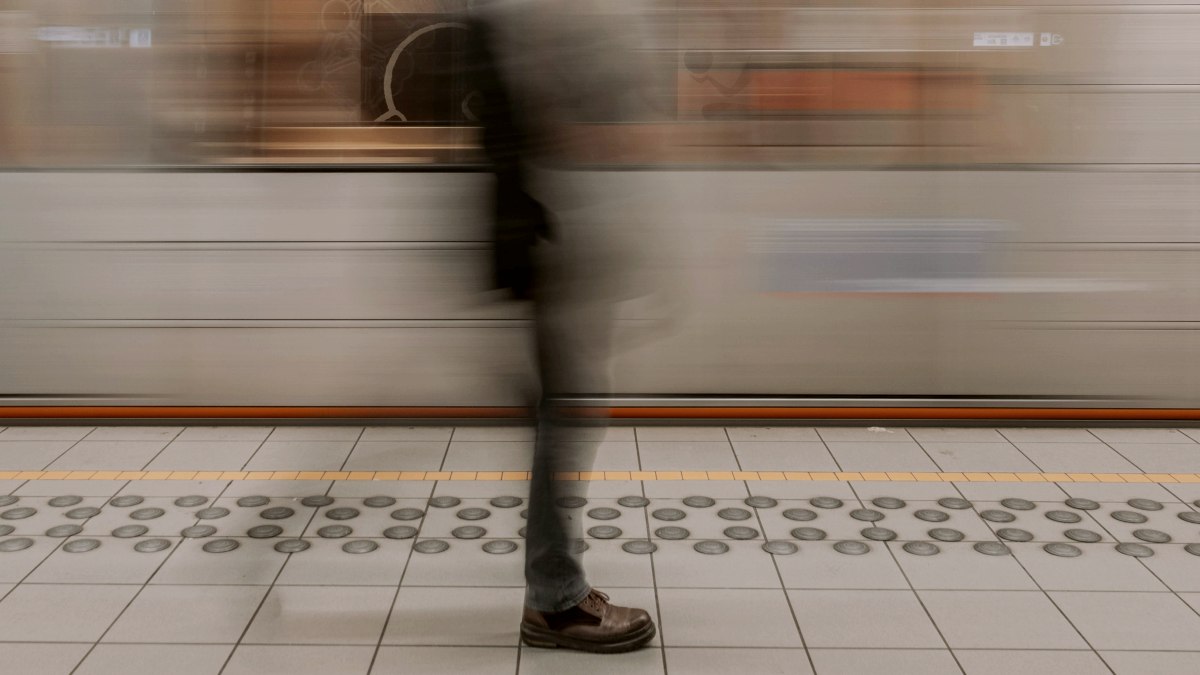
3 Reasons Why You Need 'White Space' To Thrive
Burning the candle at both ends will only leave you exhausted. Here's why you need to embrace 'white space.'

By Mark Travers, Ph.D. | February 03, 2025
In today's world, busyness has become a badge of honor. We pack our schedules to the brim and measure our worth by how productive we are. Even in our so-called downtime, we're rarely at rest. Instead, we're often scrolling through social media, binge-watching shows or checking emails.
This is gradually taking a toll on our mental and emotional well-being. Being perpetually busy keeps our minds in overdrive, which causes fatigue and reduced focus.
This endless cycle of busyness usually prevents us from being truly present in our relationships. We're so preoccupied with the next task that we fail to engage fully with the people around us, which leads to shallow connections or missed opportunities for meaningful interactions.
Consequently, it's important to embrace the concept of "white space" in our lives. White space refers to the intentional pauses we create in our day—moments of quiet and stillness where we step away from the constant stimulation.
Just like the blank spaces in a painting or design enhance its beauty and focus, the white space in our lives allows us to regain clarity, spark creativity and process our emotions.
These moments of intentional stillness are essential for improving our mental well-being, deepening our relationships and finding balance in a world that rarely slows down.
Here are three ways white space helps us thrive in life.
1. Self-Regulation Through Intentional Boredom
Boredom plays a vital role in fostering self-regulation and self-reflection, as it encourages individuals to pause and assess their current state of mind.
In the book, The Moral Psychology of Boredom, Andreas Elpidorou emphasizes that boredom is not merely an unpleasant emotional experience, but a helpful signal that alerts us to the need for change when we find ourselves in unfulfilling situations.
This state also motivates individuals to seek activities or directions that are more aligned with their values and aspirations, thereby enhancing self-awareness.
Similarly, white space—the quiet, unstructured moments we create for ourselves—offer the perfect environment to embrace that signal. It's in these pauses that we can listen to what boredom is trying to tell us. White space gives us the breathing room to reflect, to notice where we feel stuck and to gently realign with what matters most.
This invites us to reconnect with ourselves and move forward with intention. It's a reminder that sometimes the most meaningful steps begin when we simply pause and listen.
Imagine taking just 10 minutes at the start or end of each day to sit in silence, free from screens and distractions. During this time, you might ask yourself:
- What felt meaningful today?
- Where do I feel stuck or drained?
- What do I want to focus on tomorrow?
This simple practice can help you reconnect with your goals and eliminate tasks that do not serve your bigger purpose.
We can also uncover the deeper needs that our busyness might be masking and reconnect with the parts of ourselves that we may have neglected. By taking the time to do nothing, we gift ourselves the chance to uncover what truly matters and cultivate a life filled with intention.
2. Fueling Innovation And Problem-Solving
Classic research on "cognitive load theory," published in the journal Cognitive Science, suggests that the brain has limited processing capacity. When it is overloaded, it struggles to perform tasks that require creative problem-solving.
When the brain is constantly bombarded with information, it has little opportunity to pause and reflect. This cognitive overload can hinder the ability to connect ideas and think creatively. White space moments create a buffer, allowing the mind to step back and process thoughts in a less pressured environment.
Reflection during downtime allows for new connections between previously unrelated ideas, sparking innovation. For instance, many creative breakthroughs occur during activities like walking, showering or simply staring out the window—moments when the mind is unoccupied.
Taking a step back from an overwhelming problem often provides fresh perspectives. The subconscious continues to work on the problem in the background, leading to "aha" moments when you least expect them.
Research published in Molecular Psychiatry in 2022 shows that when the brain is at rest, it activates the Default Mode Network (DMN).
The Default Mode Network is a group of brain regions associated with introspection, creativity and self-referential thinking. When this network is active, as it is during daydreaming or reflection, it allows the brain to integrate experiences and make connections between seemingly unrelated concepts.
Without the cognitive overload, the brain has the mental space to enter a reflective state, facilitating:
- Idea generation. The Default Mode Network helps in forming novel connections that lead to fresh, creative ideas.
- Problem-solving. By integrating past knowledge and experiences, the Default Mode Network allows for new approaches to challenges, often through subconscious insight.
- Introspection and innovation. Moments of white space create the conditions for the Default Mode Network to function optimally, enabling self-referential thinking and fostering innovative solutions.
Embracing white space allows the brain to tap into its creative potential, making space for innovative ideas and fresh solutions to emerge naturally.
3. Enhanced Productivity Through White Space
White space might seem counterintuitive to productivity, but research and experience reveal that it actually enhances output by giving the brain the reset it needs to function optimally. Constantly operating at full capacity without breaks can lead to burnout, characterized by decreased motivation and reduced performance.
A study published in 2022 in PLOS One confirms that micro-breaks help you feel less tired and more energized throughout the workday. These effects are consistent and apply to a wide range of people and situations.
They are especially effective for improving performance in routine tasks (like repetitive office work) or creative tasks (where new ideas and out-of-the-box thinking are needed).
Breaks allow our brain to "reset," replenishing energy and improving focus. For creative tasks, taking a short break gives our mind a chance to process information in the background, which can lead to better ideas when you return to the task. For routine tasks, breaks help reduce the risk of mistakes caused by boredom or wandering thoughts, allowing us to refocus on the work.
While the "perfect" break length isn't universal, breaks close to 10 minutes are particularly effective at relieving fatigue and enhancing perceived productivity. By intentionally incorporating white space into our day, we can elevate both the quality and efficiency of your work.
Unlocking Greater Potential With White Space
Creating white space in our daily lives is essential for our well-being. A simple way to do this can be by starting to integrate innovative strategies into our daily routine.
The "10-10-10 Rule," is one such technique, where you work on a task for 10 minutes, take a 10-minute micro-break and use the final 10 minutes to reflect or reset before moving on to the next task.
You can also experiment with "pause prompts" by setting reminders to step away at regular intervals, giving your mind space to recharge. Incorporate mindfulness practices during breaks, such as deep breathing or a brief walk outside, to boost focus and clarity.
These intentional approaches help foster creativity and sustained productivity, helping you thrive both personally and professionally.
Are you curious to know whether you are paying enough attention to the present moment? Take this science-backed test to find out: Mindful Attention Awareness Scale
A similar version of this article can also be found on Forbes.com, here.
